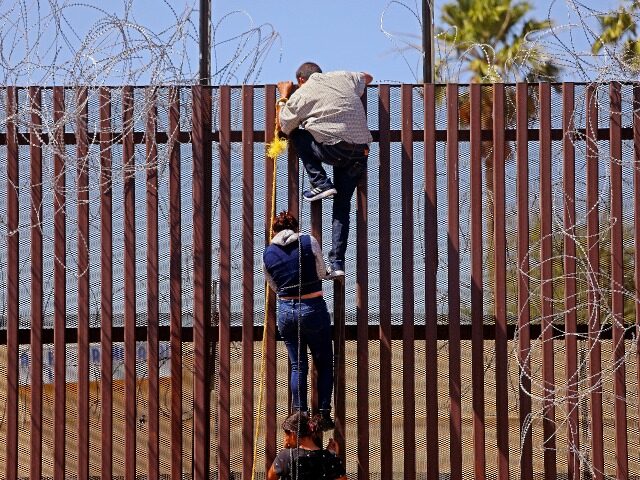JOE BIDEN = FUKING LIAR AND THAT'S ALL HE HAS EVER BEEN!
The Truth About "Bidenomics" and How It Compares to Trump's Economy | Victor Davis Hanson
RFK Jr SLAMS Biden Economy As Inflation UP AGAIN In July: Rising Reacts
Fact Check: White House Says Bidenomics Is Working Because ‘Costs’ Are Going Down

Claim: Bidenomics is working because prices are going down.
“Bidenomics is indeed working when – when we say that — you look at the data, right? Cost is going down, right? We think about inflation,” White House press secretary Karine Jean-Pierre said in an interview this week.
Verdict: False.
In general, products and services purchased by Americans do not cost less than they did in the past. The Labor Department said Thursday that the consumer price index was up 3.1 percent in July compared with a year earlier. Compared with the prior month, the index was up 0.2 percent. Core CPI, which is a measure that excludes volatile food and energy prices, rose 0.2 percent for the month and 4.7 percent for the year.
Inflation is the rate of change of prices. When inflation declines, as it has in recent months, this does not mean costs are going down. It means the pace of price increases has slowed. Last summer, prices were rising at around nine percent per year. This summer, they are up just over three percent from a year ago. Costs are going up, not down.
Bidenflation Still Sticky: Producer Price Index Rises More Than Expected

The prices charged by U.S. businesses for goods and services increased more than expected in July, a sign that the U.S. economy is not yet on a steady path to lower inflation.
The Labor Department’s producer price index, which is based on what U.S. businesses are paid for goods and services, rose 0.3 percent compared with a month earlier. Compared with a year ago, the producer price index (PPI) is up 0.8 percent.
Economists had been expecting the monthly figure would rise by 0.2 percent compared with June. The forecast for annual producer inflation was for a 0.7 percent climb.
The producer price index differs from the consumer price index, which tracks what U.S. households pay for goods and services purchased for consumption, because it includes sales to businesses, governments, nonprofits, and exports. It includes purchases of health care services, for example, that are made by employers and institutions. Sales taxes, which are included in CPI, are excluded from PPI because they are ultimately paid to government rather than producers.
Core PPI, which excludes food and energy prices, rose 0.3 percent, a tenth of a point higher than expected. For the year, core PPI is up 2.4 percent. So-called “core core” PPI, which also excludes trade services (a measure of margins for wholesalers and retailers), rose 0.2 percent compared with a month earlier and was up 2.7 percent over 12 months.
Breitbart Business Digest: Why Americans Are So Unhappy with Bidenomics

The Recession Obsession Has Faded
Let’s start with the good news.
For the first time in over a year, there is no longer a majority of Americans who say we are in a recession. The most recent poll from the Economist and YouGov indicates that just 44 percent of American adults think the U.S. economy is in a recession. This is a big change from a year ago, when 61 percent of Americans said the economy was in a recession.
As recently as the June survey, fifty-one percent of Americans said we were in a recession. That was lower than in the prior months, when the share saying we were in a recession bounced around the the mid-fifties. It was not until the July survey, when just 47 percent of Americans said the economy was in a recession, that this was not the majority position of Americans.
The survey only began asking the question “Are we in a recession?” in June of 2022, when fifty-five percent of respondents answered in the affirmative. So, for at least a year, the majority of Americans believed that the economy was in a recession. Possibly they thought that was true for even longer, but no one was asking them.
Was It a Recession?
What prompted the questioning was the contraction of the U.S. economy in the first quarter of 2022. When the economy contracted again in the second quarter, there was a very good argument that we were indeed in a recession because one of the rules of thumb for measuring a recession is the recording of two consecutive quarters in which the economy shrinks. And by that measure, we were in a recession.
The counter-argument was that even though gross domestic product was shrinking, the other markers of a recession were absent. Unemployment fell from four percent at the start of 2022 down to 3.6 percent at the end of the second quarter. Personal consumption expenditures kept rising throughout 2022. Even inflation-adjusted consumer spending kept climbing through most of the year after dipping at the end of 2021. Private-sector nonresidential fixed investment, a proxy for business investment, kept climbing.

The business cycle dating gurus at the National Bureau of Economic Research (NBER) get the honor of declaring whether or not a recession has officially occurred or not. Given the strength in so much of the economy in 2022, it was unlikely that they were going to conclude that we were in a recession.
So, why was GDP shrinking in the first two quarters? In the first quarter, this was mainly due to the drag of inventories and a rising trade deficit. Business inventories continued to grow in the first quarter of 2022 but at a much slower rate than they had earlier. A big jump in imports pulled down GDP, and weak demand from faltering economies abroad made for weak exports. Government spending declined from the pandemic stimulus spree, also helping drag down growth.
In the second quarter, inventories were an even bigger drag. And it looks like a big part of the decline in inventories was not the usual story of businesses pulling back from investing in goods or liquidating stockpiles but supply-chain issues.
By the second half of 2022, the economy was not only not contracting, it was growing above trend. The economy grew at 3.2 percent annual rate in the third quarter and a 2.6 percent rate in the fourth quarter. The growth continued this year. GDP grew at a two percent annual rate in the first quarter and 2.4 percent annual rate in the second quarter.
Why Were People So Convinced We Were in a Recession?
Yet the perception that we were in a recession persisted for much longer. The best explanation for this is not that people are irrationally upset about the economy but that they use a definition that is neither the “technical” definition of two consecutive contractions nor the official definition in which a recession is whatever the NBER says it is. Instead, what we might call the popular but unarticulated definition is probably something simpler: a recession is just an economy that stinks.
It’s pretty clear what made the economy stink: inflation. Even worse, the costs of living were rising faster than wages, which meant that people were becoming poorer month after month. The price of what government officials call “food at home”—and the rest of us call groceries—were skyrocketing.
Food prices have a big impact on how people experience inflation because they are a large and somewhat inflexible portion of most household budgets. As an old English punk band Prole once sang, “You can’t feed your kids on self-respect, and your belts only go so tight.”
A clear sign of a recession for most folks is that the stuff they need is increasingly financially out of reach, and whether that’s because jobs are scarce or prices are soaring probably does not matter that much.
So, what changed? Well, for one thing, average hourly pay is now growing faster than inflation for the first time in two years. On a longer timeline, wages still badly lag behind prices. But at least in recent months, many Americans feel that they are no longer falling behind, and some are even beginning to catch up. So, fewer people are themselves depressed about their economic situation.
Americans Still Are Not Happy with the Economy
Do not get carried away with the good news. Although fewer Americans say we are in a recession, the number who say we are is still quite high. And the share saying we are not in a recession has risen to 31 percent from 26 percent at the start of the year—just a five-point improvement.
The share who say they are not sure has climbed from 23 percent in January to 25 percent now. So, there’s also been an increase in uncertainty about whether we are in a recession.
And the outlook is still pretty dismal. The Economist/YouGov survey asks those who say they aren’t sure or that we’re not in a recession whether we’ll be in one six months from now. Back in January, four percent said a recession is very likely and 21 percent said it was somewhat likely. In the last poll, three percent say it is very likely and 19 percent say it is somewhat likely. So, the share of those expecting a recession has barely budged.
Joe Biden Claims ‘Emergency’ to Get Funding for More Migration

President Joe Biden’s deputies are asking Congress for at least $3.3 billion to help resettle millions of border-crossing migrants throughout the United States — plus another $21.6 billion to guard Ukraine’s border from Russians.
The funds for migration are being funneled through various agencies, including the Federal Emergency Management Agency (FEMA). The agencies are used to funnel taxpayer dollars to various non-profit groups that transport, feed, house, and train millions of catch-and-release migrants for the jobs and housing that would otherwise go to Americans.
… $2.65 billion is for Homeland Security Department efforts, including border management as well as shelter and services for migrants released from custody. That [$2.65 billion request] includes $416 million to help stop the flow of fentanyl over the border with “non-intrusive inspection system deployment.”
The State Department would receive $800 million for its migration assistance programs, and another $159 million would be provided for child labor investigations and enforcement and for immigration judge teams.
It further asks for $13.1 billion in military aid to Ukraine, which has now stopped the Russian advance, and $7.5 billion to support Ukraine’s economy. U.S. taxpayers have spent more than $100 billion to support Ukraine in the war, which has now turned into a high-casualty, no-negotiations stalemate.
More than 270,000 Ukrainians have already been admitted, despite European offers of homes and jobs.
The spending request was revealed by Punchbowl News, which posted a White House document that asks Congress for the $12 billion “for FEMA, to address ongoing disaster response and recovery efforts.”
At the same time, New York officials are asking for $12 billion to help them support at least 100,000 lower-wage illegal migrants who are now displacing less-skilled Americans from housing and jobs in New York City. The top Democrat legislators in the House and the Senate are both elected from New York.
Before Biden’s election, FEMA money was mostly used to help American communities recover from local disasters, such as floods, hurricanes, and tornadoes. Some of the $12 billion is likely earmarked for Hawaii, where the island of Maui was badly damaged by fires that have killed at least 55 people.
WATCH: Aerial Footage, Before & After Pictures Show Devastating Hawaii Wildfire
The request is a political dilemma for GOP legislators who face rival pressure from voters and donors.
Polls show a growing majority of Americans and GOP voters oppose migration and military aid for a no-compromise war in Ukraine. But GOP donors support continued aid to Ukraine — partly because the money eventually flows back to investors in the United States.
The donors also strongly support the government-aided inflow of additional workers, consumers, and renters into the U.S. consumer economy.
Biden has already imported at least six million migrants for economic purposes in less than three years. That economic policy has helped investors by inflating real estate prices and reducing Americans’ wages. But it has helped legislators avoid dealing with difficult domestic problems, such as the human damage caused by imported drugs:
Migration — especially labor migration — is unpopular among GOP voters and swing voters. A 54 percent majority of Americans say Biden is allowing a southern border invasion, according to an August 2022 poll commissioned by the left-of-center National Public Radio (NPR). The 54 percent “invasion” majority included 76 percent of Republicans, 46 percent of independents, and even 40 percent of Democrats.
No comments:
Post a Comment